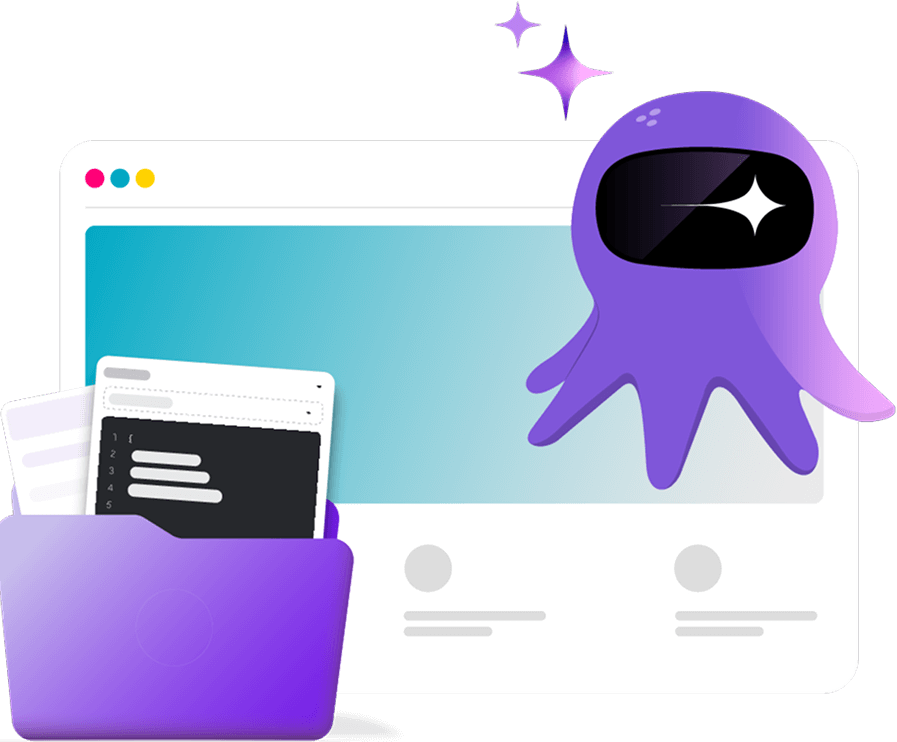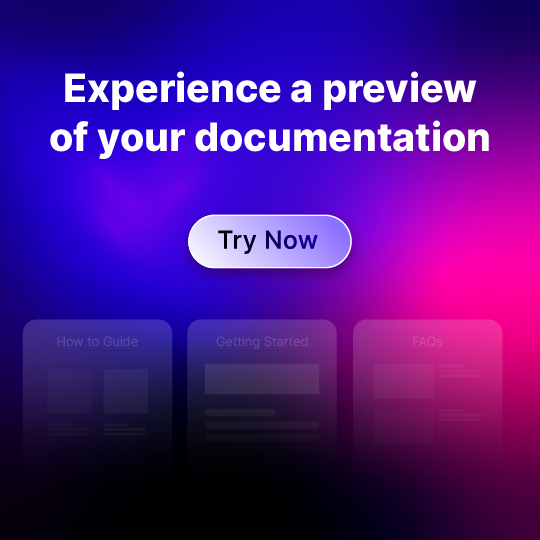The scale of documentation projects can be immense. If your organization is launching a new product or suite of products, the technical writers will be tasked with producing documentation to suit the requirements, evolving along with the project’s scope and often to tight deadlines.
As the technical writing team, you need to be aware of the potential need for documentation as soon as the project launches. This avoids last-minute requests and ensures you have adequate time to devote to the documentation. Documentation teams have competing priorities, so it’s crucial to enter the project early and establish documentation needs.
Documentation doesn’t exist in a vacuum. It’s always tied to a larger project, such as a feature release or a product launch. For that reason, collaboration with other teams and effective communication are key components of a successful project. A large documentation project requires management oversight and project management expertise.
How to Define a Large Documentation Project?
In the daily life of a technical writer, you’ll likely receive small requests for documentation changes that only take a few minutes, hours, or maybe a day. A large documentation project, on the other hand, takes weeks or months to complete. It requires active participation in a wider project management team and will likely go through many iterations before completing the documentation.
Since smaller requests are usually tied to existing docs that need updating, a larger project will require a project plan, extensive collaboration between technical writing and the product/engineering team, and multiple team members assigned responsibility for sections of the documentation. A large documentation project is a team effort.
You’ll need to utilize the right documentation management software to manage your large documentation project. Collaboration features, versioning, workflow, and AI all come together to streamline the process of creating, editing, and publishing documentation, allowing other team members oversight into your work and making it easier to manage documentation once it’s published.
What are the Common Challenges?
If you’re embarking on a large documentation project, you’ll likely run into some common challenges when managing your docs.
Maintaining Consistency – With multiple writers working on your documentation, achieving and maintaining consistency can be a struggle, even if you implement a style guide and a rigorous editing process. Multiple voices can cause confusion in the docs and undermine your brand.
Version Control – As the editing process progresses, you’ll end up with multiple versions of a document and sometimes realize that an earlier version was closer to your definition of being done. Sending Word documents back and forth between your team just doesn’t cut it when version control is a factor.
Resource Management – With deadlines looming and scope creep, some team members may also be pulled away by other projects. Resources can be measured by time, personnel, and budget, and failing to allocate these effectively both up front and during the project can lead to issues.
Cross-functional Teams Collaboration – If there isn’t sufficient buy-in to the documentation and commitment to the docs from cross-functional teams, you can run into problems. If you can’t obtain the necessary information or schedule timely reviews of the docs by subject matter experts, your project will stall.
Schedule a demo with one of our experts to take a deeper dive into Document360
Book A Demo
Key Steps in Managing Large Documentation Projects
Whether you’re handling product manuals, knowledge bases, or internal documentation, having a solid plan in place is key. Let’s break down the key steps to make the process smoother and more efficient.
1. Identify and Define Documentation Needs
The first step in managing the project is to identify and define the needs of your documentation. It won’t be totally obvious what the project requires until you sit down and document the documentation. This process allows you to estimate the scope of the work, how much time it will take, and who should be assigned to work on it.
When working cross-functionally, your colleagues are not likely to be experts in what they need for the documentation. It may not even be something they think about until you reach it. Technical writers should act like consultants and set reasonable expectations for the time and effort needed to devote to the documentation to avoid any unpleasant surprises later.
This is also the time to become embedded into the cross-functional teams leading the project so that documentation can become a priority from day one.
2. Align Documentation Priorities with Business Goals
Comprehensive documentation may have to compete with “just enough” documentation to make the wider project viable. Aligning documentation priorities with business goals means taking into account all the factors that might affect the project’s success. This may mean finding out exactly when the product will launch, what the key features are, and who the key stakeholders in the project are.
Factors to take into account are compliance, support available for the product, and the relative importance of particular documentation tasks. Understanding the priority level of your large documentation project within the larger business environment will help you manage resources and make the case for extra support or budget.
3. Delegate Tasks to Technical Writers
In a large documentation project, you’ll likely be working with teams of writers to get the work done. Each writer will have their domain of expertise, strengths and weaknesses, and time available. Remember, you’re likely working on more than one project with competing timelines and deadlines, all requiring the active participation of the technical writing team.
Getting an idea of your team’s workload enables you to allocate tasks effectively and drive the documentation project towards completion. Learning ahead of time when conflicting priorities will occur or when bottlenecks will stall the project will help you plan your team’s resources and ensure success.
4. Develop Comprehensive Project Plans
Since you’ve looked ahead to define documentation needs, align with strategic goals, and allocate tasks, you can use all of this information and more to fill out a comprehensive project plan. A thorough project plan requires cross-functional collaboration, particularly with product managers, to design and document everything you will need to help you manage your large documentation project.
This plan will become the roadmap you follow as you work through the project of managing the documentation. The plan indicates the stages you will go through, from draft to final document, references the need for subject matter experts to collaborate and review documents, and allows time for editing, publishing, and testing.
5. Break Down Work into Manageable Tasks
A large documentation project can be overwhelming. That’s why it works to break down your project into smaller, manageable chunks. A chunk could be a category, a single page, or even a single paragraph of your documentation. Your chunk should take no longer than a day or two to complete to give your team a sense of progression taking place in the project.
Each chunk of your documentation should be related to the parent documentation project, so all tasks completed are working towards completing the project. Don’t try to chunk your tasks for the entire project at the beginning because requirements will change, and it will be hard to have an accurate view of the future work needed. Focus on a week at a time to make every technical writer aware of their next priorities.
6. Organize Tasks in a Sprint Board
If your team is using the agile methodology, you can organize your tasks into a sprint board that aligns with the next sprint, which is the next two weeks in which your team will try to complete all the tasks assigned to them within that time frame. To make your goals more realistic, each task is weighted with points, with one point estimated at half a day of work.
The capacity of your sprint will depend on the number of writers you have on your team. Each writer can achieve work totaling ten points, and you have five writers, so that means you have a capacity of fifty points for your next sprint. Using this method gives you a better idea of how much you can accomplish within a given period and allows you to review and improve at the end of each sprint.
7. Begin Content Creation
You are ready to begin the content creation process using the right content management platform. The sprint has begun, and your team is racing to complete the first tasks of the documentation, using a documentation tool such as Document360 to write, edit, and manage the documentation.
Document360’s system is an advanced portal with state-of-the-art editors, a category manager, analytics, and more. Writers can use Document360’s portal to view every article that has been assigned to them, write content in the editor, and submit for viewing, all in one seamless workflow.
8. Implement a Structured Review Process
Once the documentation is written, you’ll need to submit it for a structured review process to analyze characteristics such as consistency in style, tone, and formatting. You can also bring in subject matter experts with specific permissions to review the accuracy of the documentation.
Document360 is a tool that you can use to share the documentation with other stakeholders in cross-functional teams so that they can view the content when it’s ready (before publication). Use Document360’s workflows to define each stage of the publication process, ranging from draft to edit, review, and publish.
9. Deliver Regular Progress Reports
Work closely with the project management team to deliver regular process reports that update the project lead on the documentation status. Depending on the timeline of your projects, these status updates can be weekly or monthly, depending on how much input you need from the product team.
Use these reports as a chance to request more information, adjust the trajectory of the project depending on documentation requirements, and gain feedback on the overall quality of the docs. Regular updates are critical in preventing nasty surprises near the end of the project, when it might be too late to make changes.
Best Practices to Follow
When managing a large documentation project, following best practices can save you time, reduce errors, and keep everything organized. Here are some best practices to keep your project on track.
Follow Topic-Based Authoring – large documentation projects benefit from using a topic-based authoring approach in which your content is broken down into reusable topics that can be inserted into different projects. This approach reduces redundant work and is especially beneficial for projects that relate to a suite of connected products.
Set Up a Clear Documentation Style Guide – your technical writing team will benefit from a style guide that lays out clear rules relating to the documentation’s style, tone, and voice. Include guidelines that explain how the company refers to itself, its products, and any other aspects of the documentation.
Regularly Review Documentation – Even when your large documentation project is completed, this won’t be the end of the journey. Regularly review the documentation to make sure the content is up-to-date and still relevant, especially if your product is evolving and undergoing new releases.
Optimize Documentation Processes – Take the time to optimize your processes, finding ways to make it easier for documentation roles to collaborate, communicate, and organize their work.
Leverage the Right Tools – Managing large documentation projects requires the right tools to complete your work, and you can benefit from documentation software such as Document360 to write, edit, and publish the docs. Choosing Document360 means you can integrate with other tools to improve your workflows, including productivity apps such as Slack and Teams.

Check out our video on how the workflow feature streamlines your documentation review process with structured review stages!
Conclusion
Managing a large documentation project requires paying attention to many moving parts and collaborating with multiple stakeholders. Documentation teams must be present from the beginning of the project to offer oversight and insight into documentation needs, helping team members to understand the importance of docs right from conception.
Utilizing agile methodologies, adopting the right tools such as Document360, and appropriately delegating work are some aspects of managing such a large project. Documentation is so often part of the definition of done, and yet it can be overlooked by teams leading on projects that have many other competing priorities.
Treating documentation as its own sub-project (within a larger project) means you can align with business goals and make sure documentation reaches the required standard before your product or feature ships.





 –
– 

